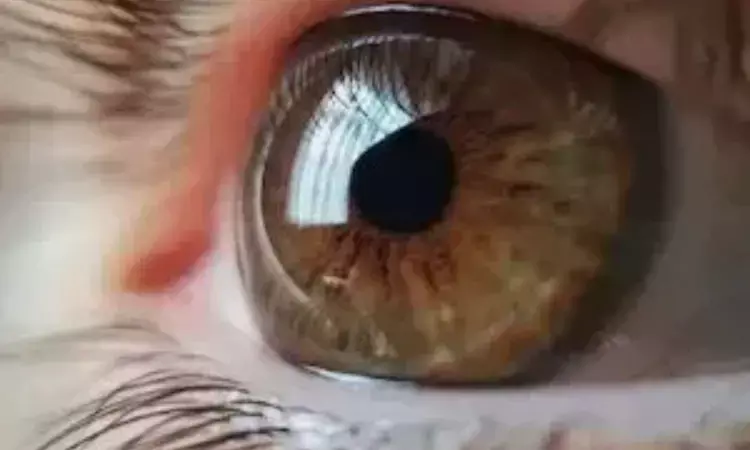- Home
- Medical news & Guidelines
- Anesthesiology
- Cardiology and CTVS
- Critical Care
- Dentistry
- Dermatology
- Diabetes and Endocrinology
- ENT
- Gastroenterology
- Medicine
- Nephrology
- Neurology
- Obstretics-Gynaecology
- Oncology
- Ophthalmology
- Orthopaedics
- Pediatrics-Neonatology
- Psychiatry
- Pulmonology
- Radiology
- Surgery
- Urology
- Laboratory Medicine
- Diet
- Nursing
- Paramedical
- Physiotherapy
- Health news
- Fact Check
- Bone Health Fact Check
- Brain Health Fact Check
- Cancer Related Fact Check
- Child Care Fact Check
- Dental and oral health fact check
- Diabetes and metabolic health fact check
- Diet and Nutrition Fact Check
- Eye and ENT Care Fact Check
- Fitness fact check
- Gut health fact check
- Heart health fact check
- Kidney health fact check
- Medical education fact check
- Men's health fact check
- Respiratory fact check
- Skin and hair care fact check
- Vaccine and Immunization fact check
- Women's health fact check
- AYUSH
- State News
- Andaman and Nicobar Islands
- Andhra Pradesh
- Arunachal Pradesh
- Assam
- Bihar
- Chandigarh
- Chattisgarh
- Dadra and Nagar Haveli
- Daman and Diu
- Delhi
- Goa
- Gujarat
- Haryana
- Himachal Pradesh
- Jammu & Kashmir
- Jharkhand
- Karnataka
- Kerala
- Ladakh
- Lakshadweep
- Madhya Pradesh
- Maharashtra
- Manipur
- Meghalaya
- Mizoram
- Nagaland
- Odisha
- Puducherry
- Punjab
- Rajasthan
- Sikkim
- Tamil Nadu
- Telangana
- Tripura
- Uttar Pradesh
- Uttrakhand
- West Bengal
- Medical Education
- Industry
Rare case of sudden unilateral corneal clouding in diabetic patient with poorly controlled blood sugar: A report

China: For diabetes patients, it is imperative to strictly control blood glucose and conduct regular examinations to minimize the impact of eye-related and systemic complications; this is the key takeaway from a case report described in Medicine.
Various diseases can cause corneal opacity. Generally, the opacity gradually increases with the disease progression. Sudden corneal opacity is caused mainly by corneal trauma, acute edema of the keratoconus, or toxic drugs entering the cornea. However, there have been no reports of sudden corneal opacity caused by diabetes has not been reported.
Xiaoguang Niu, Aier Eye Hospital of Wuhan University, Hubei Province, China, and colleagues reported the case of a 60-year-old man with diabetes who experienced unilateral corneal clouding. The man reported blurred vision, and the black eye appeared white in the left eye for five days. The patient had a history of diabetes which had not been treated.
He underwent slit-lamp examination, ultrasound biomicroscopy, anterior segment optical coherence tomography, corneal endothelial examination, B-mode ultrasound, ultrasound biomicroscopy, and other examinations. Diabetic keratopathy was diagnosed.
The patient was administered topical glucocorticoids and dilating eye drops and underwent treatment for blood sugar control. In a few days, the corneal of the patients was utterly transparent, and the flocculent exudation in the anterior chamber disappeared.
"Although diabetes generally causes chronic corneal edema, acute corneal edema may also occur in cases where blood sugar is poorly controlled," the researchers wrote. "Therefore, when we see sudden corneal opacity without obvious incentives, systemic diseases must be considered, especially diabetes."
"The mechanism of the impact of diabetes on the cornea has not been fully clarified, and acute corneal edema caused by diabetes is not common," the authors noted. "Determining the cause of corneal edema according to its morphology is imperative."
Various eye changes are a result of diabetes. In the patient described in our case report, they wrote that acute corneal oedema occurred due to not paying attention to blood glucose control. If the poor glycemic control continues, whether repeated acute corneal edema under hyperglycemia significantly impacts the corneal endothelium and corneal stroma or whether other complications remain to be observed.
"For patients with diabetes, it is imperative to strictly control blood glucose and conduct regular examinations to minimize the impact of eye-related and systemic complications," they concluded.
They noted that although the patient had severe acute corneal edema, the retinopathy was not severe. There were only a few scattered bleeding points on both eyes' retinas, and no hard exudates or profound proliferative changes were found. Therefore, it is implied that keratopathy in diabetes patients may occur earlier than or at the same time as retinopathy, and the two are not synchronized.
Reference:
Xu, Man PhDa; Wu, Shujuan PhDa; Niu, Xiaoguang MDa,*. Sudden unilateral corneal clouding in diabetic patient: A case report and literature review. Medicine 102(22):p e33919, June 02, 2023. | DOI: 10.1097/MD.0000000000033919
Dr Kamal Kant Kohli-MBBS, DTCD- a chest specialist with more than 30 years of practice and a flair for writing clinical articles, Dr Kamal Kant Kohli joined Medical Dialogues as a Chief Editor of Medical News. Besides writing articles, as an editor, he proofreads and verifies all the medical content published on Medical Dialogues including those coming from journals, studies,medical conferences,guidelines etc. Email: drkohli@medicaldialogues.in. Contact no. 011-43720751


